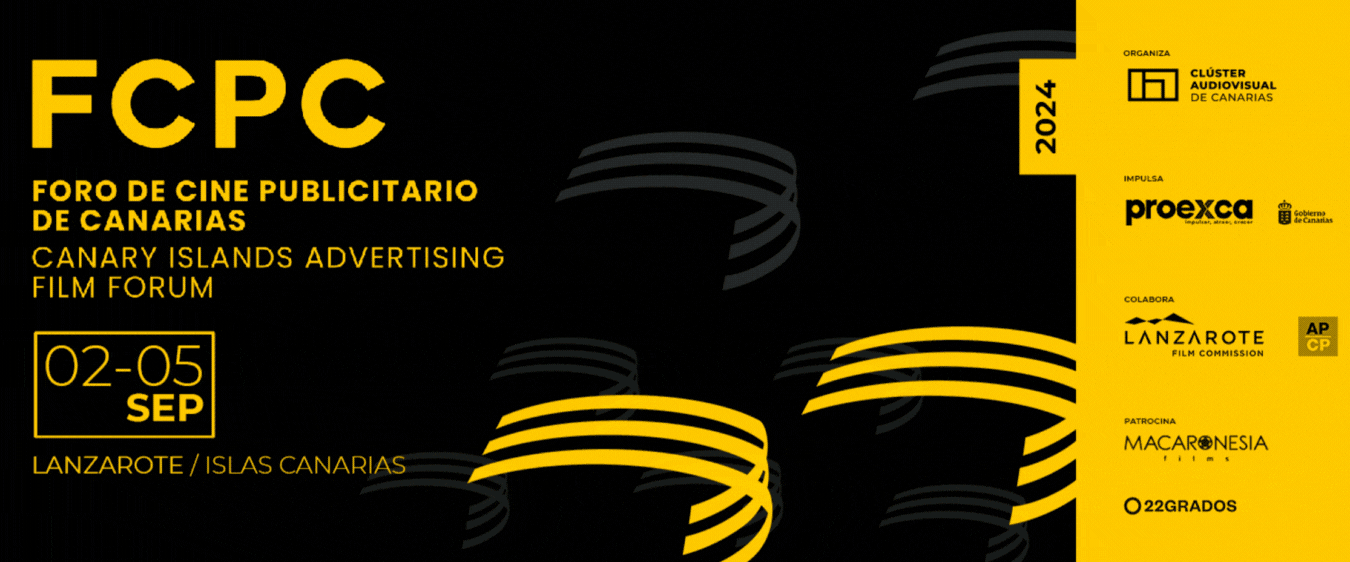
From 2 to 5 September, an essential meeting was held to build bridges with the local industry and to get to know the incredible locations available for filming that the islands have to offer.
Every year, the Canary Islands Audiovisual Cluster promotes the Canary Islands Advertising Film Forum (FCPC): an event that offers a unique opportunity to connect with specialised companies in the sector, generate new bridges and strategic alliances to promote the development of the local industry. The FCPC is the only event aimed at advertising film companies that takes place in the Canary Islands.
This year it was held between 2 and 5 September with a call that included professionals from the most important creative agencies, production companies and companies linked to the audiovisual advertising sector. The APCP was present through its general director, Adriana Piquet. The programme included, through the collaboration of Lanzarote Film Commission, a meeting with the local industry, as well as a scouting for the islands of Lanzarote and La Graciosa, stunning locations that are available for filming.
We share with you a bit of the travelog and some images to discover some of the stunning corners of the island.
DAY 1
Lanzarote offers a great diversity of landscapes and beautiful locations, accessible for both filming and photo shoots, situated in the safe and peaceful environment provided by the Canary Islands, and favored with attractive tax incentives, which make the Archipelago in general and the island in particular, an exceptional destination for film, television and advertising shoots. In addition to Lanzarote’s striking volcanic, desert, agricultural and coastal natural areas, the island also offers a wide variety of urban environments, from large tourist resorts to picturesque white villages, historic town centers, modern architecture and luxury commercial and marina areas. Among the advertising film productions shot in Lanzarote in recent years are international automotive campaigns such as Porsche, Mercedes, Audi, BMW; or well-known fashion brands such as Massimo Dutti, Mango, Parfois, Pull & Bear or Zara, among others. Lanzarote is a singular and unique place in the world, forged by fire and water, the easternmost of the Canary Islands. It is defined by its volcanic history and the legacy left by its universal artist, César Manrique, of whom you will hear a lot if you visit the island. Its semi-desert climate and almost no rainfall, on the one hand, has been an opportunity for tourism, and on the other, has historically been a permanent challenge for the people of Lanzarote, traditionally an agricultural society that also had to deal with the mountain range of volcanoes and lava. Their ingenuity in bringing life from the ashes – something you will discover in places like La Geria and its ‘impossible vineyards’ – is the first lesson to be learned in Lanzarote: resilience, adaptation and balance with the environment. This popular wisdom was wisely reinterpreted in the 1970s by architect, painter and sculptor César Manrique (1919-1993), who dedicated his life and work to protecting and ‘showing the world’ the unique beauty of his homeland, exploring the links between art and nature. His influence can be seen throughout the island, in the way the local architecture dialogues respectfully with the landscape, with no tall, grand buildings interrupting the view of the bright whitewashed villages, subtly framed with green and blue doors and windows, contrasting with dark earths, ranging from black to ochre to red, and turquoise waters. The best of Manrique’s legacy is also to be found in Lanzarote’s world-renowned network of Art, Culture and Tourism Centres, an example of the integration of artistic creation in the territory that brings together places such as Jameos del Agua, Mirador del Río, Jardín de Cactus or Montañas del Fuego. During the hectic first day of the FCPC, we visited the Islote de Fermina (Arrecife). The history of the Port of Arrecife is linked to fishing activity, its small docks and its coastline, marked by islets that emerge off the coast, such as the Islote de Fermina, which in the 1970s César Manrique designed as a quiet refuge for enjoyment in the capital of the island. We continue with a visit to the Casa-Museo del Campesino, an old farmhouse restored by César Manrique, which features popular Lanzarote architecture with white façades, green carpentry and patios. Then, the visit en route to the wine-growing area of La Geria, declared a ‘Protected Space’, is the main wine-growing region of Lanzarote. Situated on the edge of the badlands and covered in black volcanic ash, the vineyards of the La Geria valley seem to have been transplanted there from another planet. We ended the day with a networking activity/welcome dinner at the Boutique Hotel César Lanzarote (Macher), a timeless property in the La Geria Natural Park in Lanzarote, surrounded by vineyards and overlooking Fuerteventura.
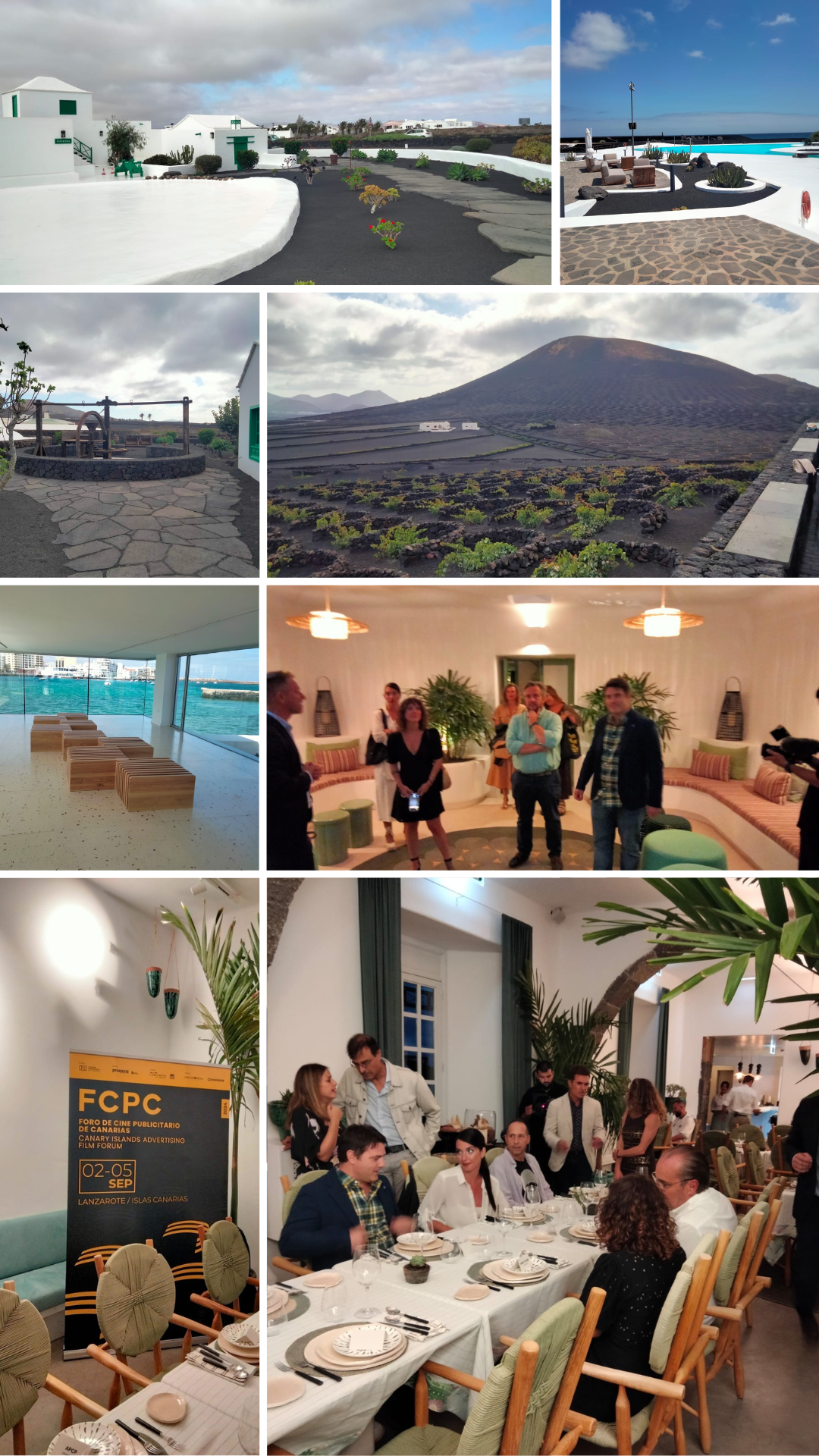
DAY 2
We started the day with a professional meeting in the hotel La Isla y el Mar, as a speed dating. With participating companies, partners of the Canary Islands Audiovisual Cluster such as 22 degrees, Vanessa Morales (Expansion Director); Canary Productions, Gadi Cimand (Executive Producer); Flywus Studios, Doraima Méndez (Producer); La Crème FIlms, Dayda Brito (Production Director); Macaronesia Films, Jaime Romero (Managing Director) and Curro Orellana (Executive Producer); as well as other local companies from Lanzarote. And then, we started the day’s fam trip around Lanzarote. We visited Jameos del Agua: César Manrique’s masterpiece, it offers a fascinating journey through volcanism, geology and a geology and a perfect combination of art and nature. We continue with a visit to Rofera Piletas del Mojón-Teseguite; this is an old rock quarry from which rofe (lapilli or picón) was extracted. It has a mysterious and ghostly appearance, due to the peculiar landscape offered by the silhouettes of black rock with dark cavities that are found around it. In the afternoon, we continue our visit to the old town of Villa de Teguise, which was the capital of Lanzarote for several centuries and the first civil and urban settlement in the Canary Islands. We finish the day with a visit to Caleta de Famara and Famara beach. In Caleta de Famara, time seems to have stopped between its sandy streets and white fishermen’s houses with blue carpentry.
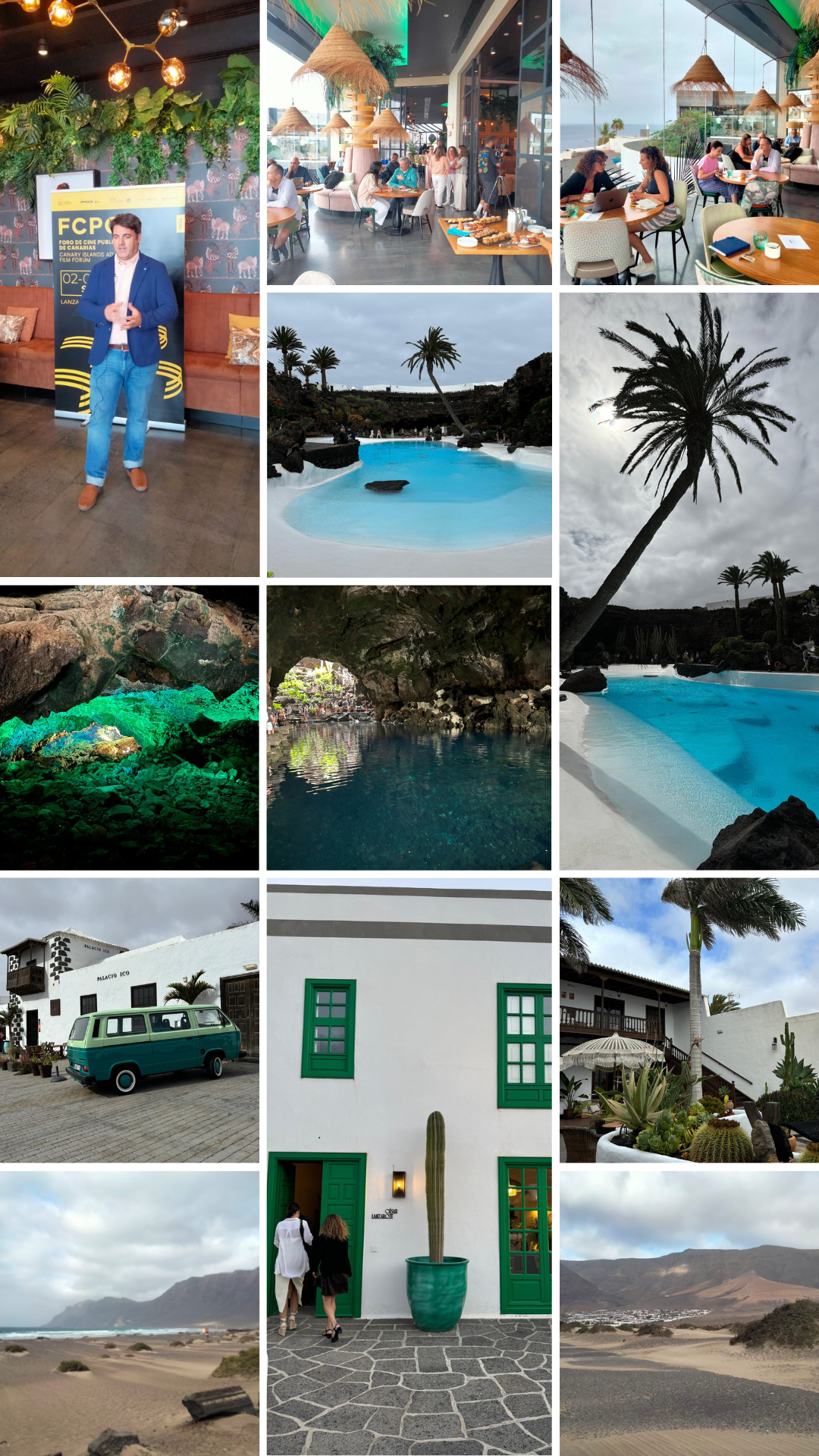
DAY 3
We start the day with a visit to the Cactus Garden, designed by César Manrique, a pioneering example of land art, and a green oasis with 1,400 species of cactus from three continents. We continue our visit to Caletón Blanco Beach, located in the north of the island, a small sandy area free from the pressure of urban development, with crystal clear waters and very calm waves. At midday, we take the Órzola Ferry to the island of La Graciosa, a unique place in the Canary Islands, as it is the only inhabited island in the Chinijo Archipelago Natural Park, to the northwest of Lanzarote. The island is part of the Chinijo Archipelago Marine Reserve, the largest in Europe with 70,700 hectares. We continued with a visit to Caleta de Sebo: pure white houses and golden sandy streets where time seems to have stood still. We also went on a 4×4 tour and visited places such as Pedro Barba, Las Conchas/La Francesa Beaches. On the way back, we closed the day with a copious dinner at the Kentia Gourmet Club.
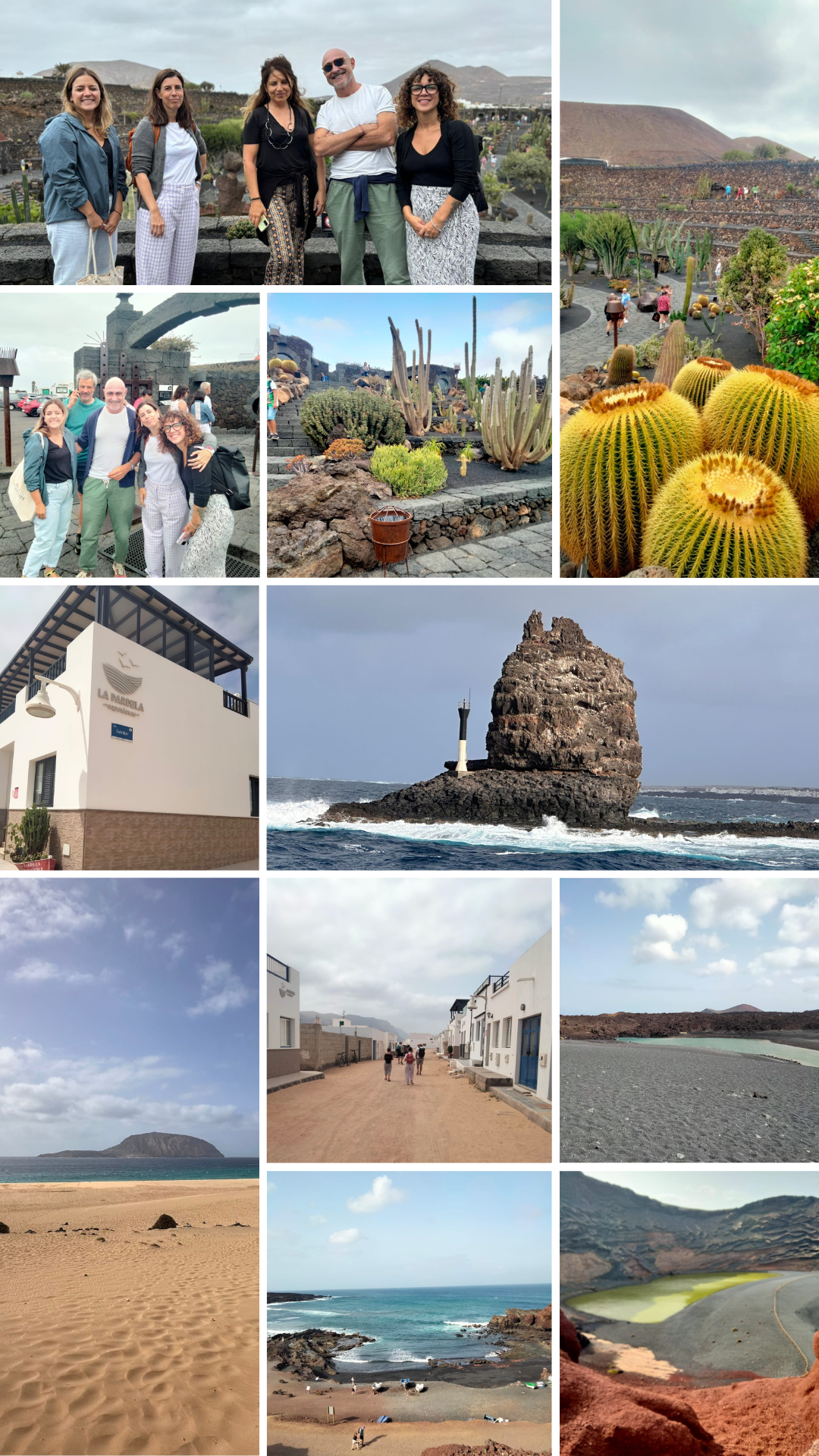
DAY 4
Very important: to make the most of the day, it is always recommended to start very early, around 7 am. This was the day to visit the Golfo and Charco de los Clicos, and then on to Montaña Bermeja: located to the southwest of Lanzarote, it is an almost desert-like volcanic area whose black, brown and reddish tones contrast with the greenish colour of the small puddle formed by the seepage of sea water along the coast. We also made a brief visit to the Cuervo Volcano and the surrounding area of the Volcano Park, passing through rural areas and inland villages, passing through large expanses of sand that contrast impressively with the lava fields of the Volcano Park, up to the Cuervo Volcano. Towards midday, we shared the experience of visiting the Stratvs winery, located on the shores of the Timanfaya National Park in La Geria. The architectural design of Stratvs, one of Lanzarote’s most awarded wineries, has been conceived with the utmost consideration for the landscape value of the place and its status as a protected natural area. With this last day of activities, framed within the Foro de Cine Publicitario de Canarias (FCPC), we closed our 4-day adventure through the Canary Islands, a location that provides incredible landscapes and that even the most difficult to imagine are available for filming.
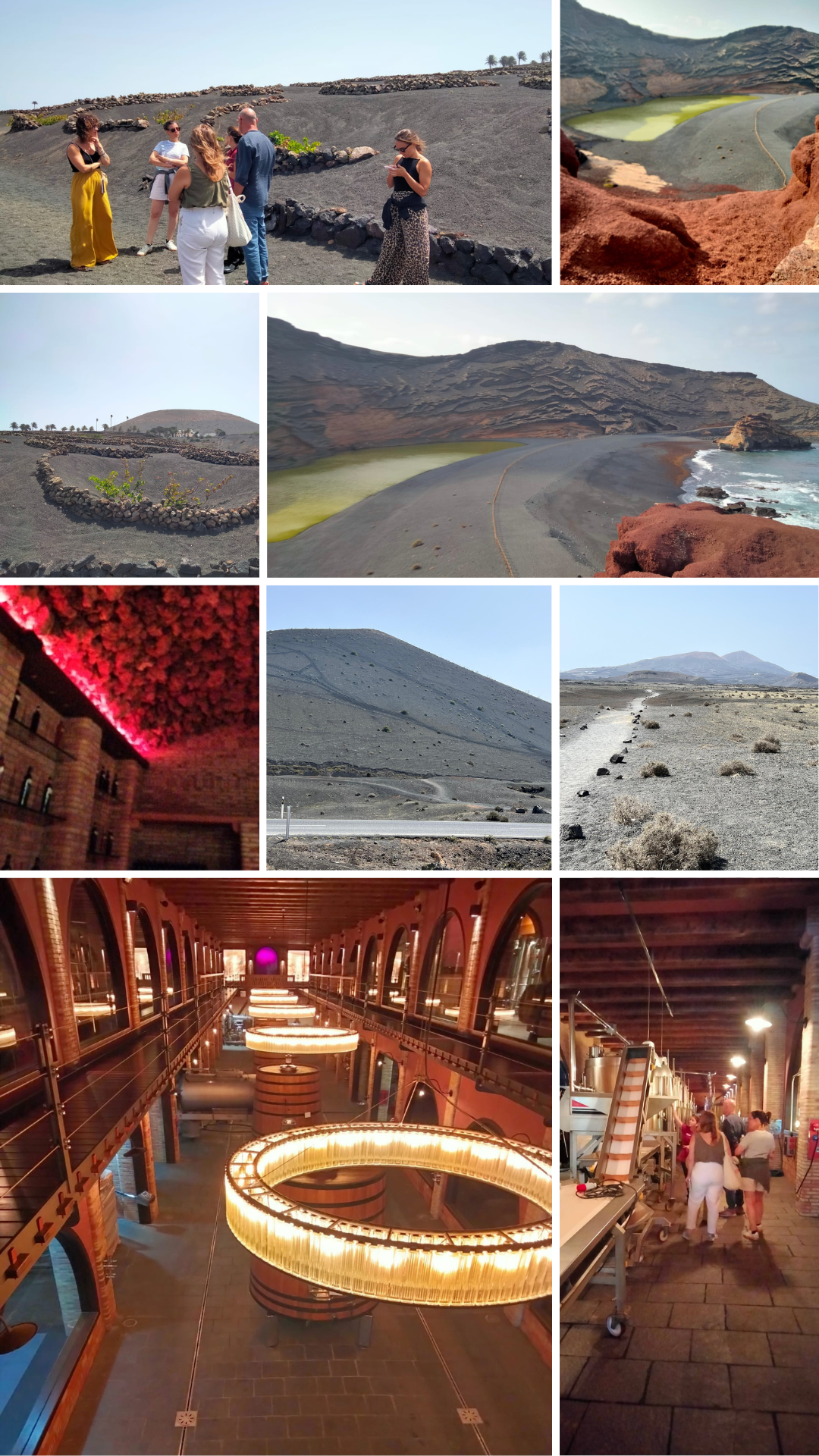
The FCPC is part of the collaboration agreement between the Audiovisual Cluster of the Canary Islands with Proexca and the Association of Advertising Film Producers of Spain (APCP), with the sponsorship of Macaronesia Films and 22 degrees.
From the APCP we celebrate these initiatives that keep the network of professionals connected, and offer a new panorama of incredible locations ready to shoot.



